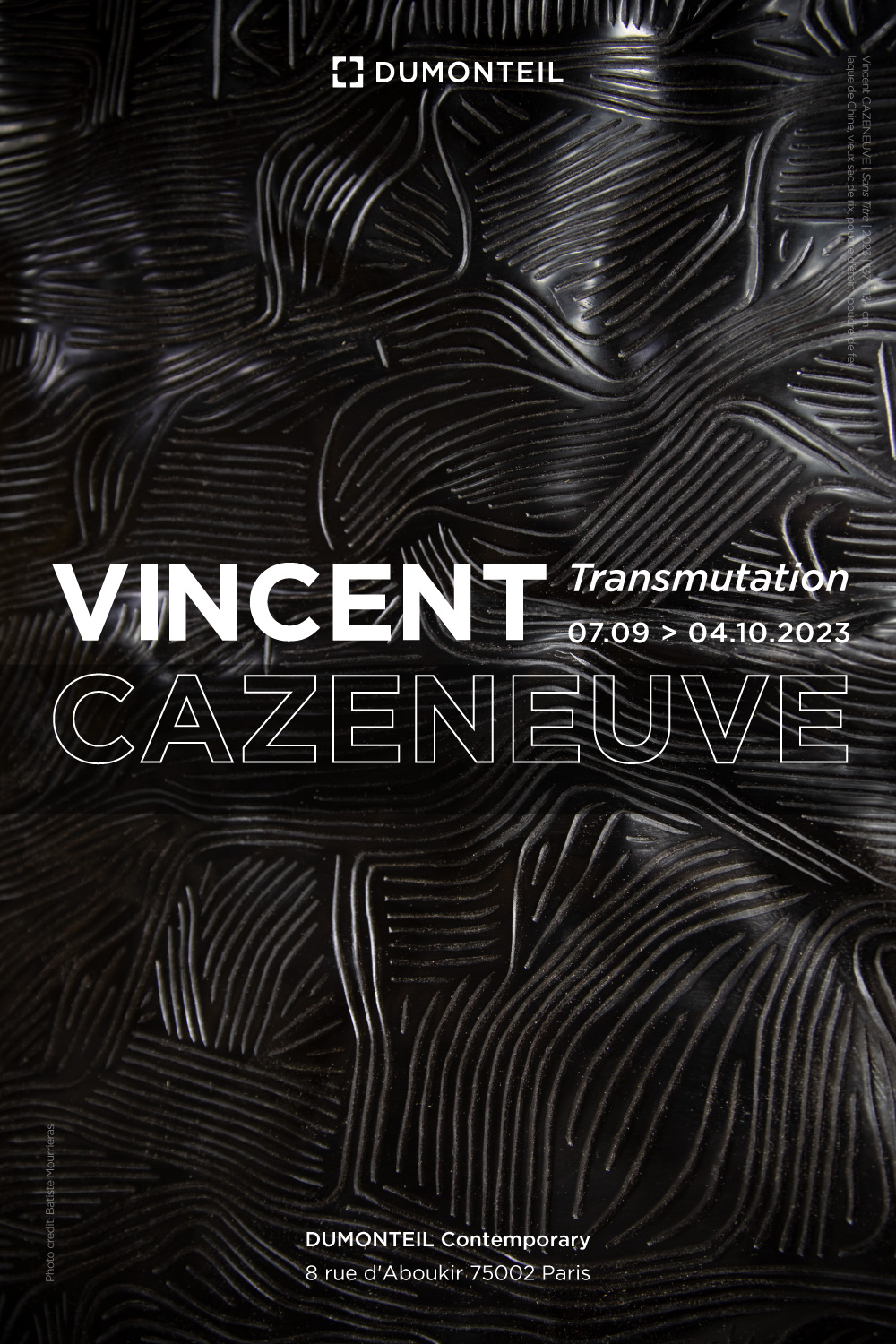No doubt, what is presented here has its roots in lacquer — a medium so versatile that provides the artist with an endless quest for exploration. However, when examining closely, one can hardly connect the final work with the source of the artist's inspiration or research subject as he carefully ‘weaves’ them into his deceptively simple yet complex language. For instance, the traditional gilt on black lacquer technique uses only different shades of gold on detailed drawings, whereas Cazeneuve enthusiastically explores a mixture of metallic color including gold, bronze, tin and iron with abstract lines and symbols that seems to belong to unknown civilizations.
Walking around these works, we may soon find ourselves lost in an aesthetic complexity when delving into the myriad of patterns, textures and shades of color as each part of the work interacts and contrasts with each other. These works have stirred our senses more than usual pictorial creations through their diverse form and materiality.
In a large piece dominated by black carved lacquer, a distinctive form of lacquerware originated from Song Dynasty, the artist patiently applied fifty layers of black lacquer to get the right carving impression he desires. These carved lines flow in groups as they diverge and spread like a picturesque patchwork of farmlands, aptly echoing the rice bag under these layers of lacquer as a support.
Just as each work is untitled — a clear declaration that they do not belong to the world of language, it is never the artist’s intention to educate the viewer on a certain history or technique of the art of lacquer. It is all about perceiving, and hopefully, evoking interest, delight, or even ecstasy, the same sensation that the artist has felt when transforming the materials in his hands, a sense of touch that we have gradually lost during the progress of modernity.
This longing for building an emotional connection with the material is not about reminiscence of the past, but it is about putting our own existence into being and into the perspective of nature/universe. In this sense, lacquer is perhaps one of the most appropriate materials of representation with its history of usage dating back to about 8,000 years. And Cazeneuve’s thoughts on the source of this medium—the lacquer tree and its harvester—have taken his creations further.
In his work consisting of one hundred and twenty large spoons, Cazeneuve paid tribute to the life circle of a lacquer tree. After a lacquer tree has been harvested four times, it dies slowly; but if someone cuts it before it dies, it earns a second chance to grow into a healthy trunk. Pondering this marvel of nature, the artist decided to cut down the two beautiful lacquer trees beside his studio, both of which have been harvested four times. Then he found his inspiration from the shape of a spoon, one of the most commonly used objects, and transformed these pieces of wood with accumulated cuts into a species of spoon, each similar and different in its own right. When he decorated them with the lacquer that he has harvested himself from these two trees, the circle was complete.
This wonder of transmutation is what Vincent Cazeneuve hopes to give the viewers today, tomorrow, and for the centuries to come.
